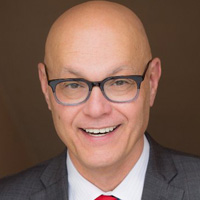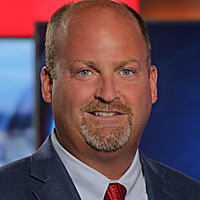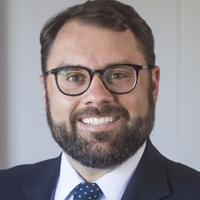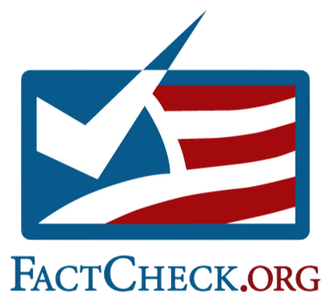
Transparency Is Key To Local News’ Credibility

In an age of political division and so-called “fake news,” transparency in reporting is increasingly critical as local TV newsrooms strive to retain credibility with their audiences.

Dan Shelley
“All journalists have is their credibility, and credibility means the ability to be believed,” says Dan Shelley, executive director of the Radio Television Digital News Association (RTNDA). “Journalists all across the country in communities large and small, in TV and in radio, know they have a connection with the community that they have usually spent years building and they are careful about not spending that credibility unnecessarily.”
“Having been in local broadcast news my entire career, people do still really trust us,” says Paul McGonagle, VP and news director of Fox-owned WTTG (Fox)-WDCA (MNT) Washington. “We have an obligation to hold on to that trust and we can’t break it. That trust is everything to us.”
Local news sources already have an advantage in that they are considered by many to be the most trustworthy news source over national broadcast or cable news. An October 2019 Knight-Gallup study found that “six in 10 Americans believe local news organizations are accomplishing most of the key tasks of informing communities. And local journalists are seen as more caring (36%), trustworthy (29%) and neutral or unbiased (23%),” according to the Knight Foundation blog on the report.
Those feelings may have changed recently with the Trump administration’s constant challenge of mainstream media and the difficulty of knowing what was true during the pandemic as information constantly shifted.
A study released by the Pew Research Center on Aug. 31 found that since 2016, the percentage of Republicans who trust national news organizations has dropped from 70% to 35%, while nearly 80% of Democrats and Democrat-leaning independents say they have “a lot” or “some” trust in those same organizations. This marks the largest partisan gap in five years, according to Pew.
Trust in local news sources also has declined, according to that same study, but not as precipitously. As of June 2021, Democrats are 18 percentage points more likely than Republicans to have at least some trust in the information that comes from local news organizations — 84% vs. 66%, respectively, Pew reported. Five years ago, 85% of Democrats had at least some trust in local news organizations, while 79% of Republicans did.

Paul McGonagle
That huge divide in trust across the political spectrum makes it that much more important for local newscasters to incorporate transparency into their reporting, says Aaron Sharockman, executive director at PolitiFact based at the Poynter Institute in St. Petersburg, Fla.
Showing Your Work
“That’s where we get into trouble — if you don’t show your work, it’s super easy for someone to criticize you on the other side,” Sharockman says. “That’s the very specific reason that [journalists] need to think not only about debunking false information but also about how and why they are going to [be believed].”
“Transparency is a key factor in maintaining or building trust among the audience,” Shelley says. “The key way to do that is by using station websites and social channels as an extension of coverage to provide more transparency. [TV anchors and reporters] need to explain not just what the sausage is but how that sausage was made in terms of the process the station went through to cover the story. The station website offers a tremendous opportunity — one that is increasingly being used to help show that transparency to the viewing public.”
One example of how a station did this took place in 2017 after the events in Charlottesville, Va. One of the young men who appeared in a prominent photo from the event was identified as being from Cincinnati. Instead of just following the crowd and reporting that, E.W. Scripps-owned WCPO in Cincinnati worked its sources, double- and triple-checking before reporting that the man was, in fact, from the station’s market. While other outlets reported that as fact, WCPO waited until it felt it had the information confirmed. All the while, the station came under criticism from people who felt it was covering for a white supremacist.
In the end, the station’s news team confirmed the man’s identity and used its website to explain step by step all the vetting it went through and why it felt it was important to be cautious before reporting the story.
“That seemed to satisfy people that this wasn’t an attempt by WCPO to service white supremacy but to be totally transparent,” Shelley says.

Aaron Sharockman
WTTG-WDCA’s McGonagle agrees. “Our digital platforms have been a huge benefit for us,” he says. “For example, in a recent police shooting in D.C., the police released the body-cam footage and it’s already up on our YouTube channel so viewers can see it for themselves.”
In other situations — a complicated court case, for example — WTTG-WDCA puts all the court documents up on its website for viewers to peruse.
Starting At The Pitch
For many stations, the process of transparency starts with the pitch.
“For us, transparency starts in the editorial meeting,” McGonagle says. “If anyone is pitching a story, we make them disclose where that pitch is coming from. In a big city like D.C., there are very aggressive public relations representatives. There’s nothing wrong with that, but it’s important to know what they are trying to get across.”
WTTG-WDCA also makes a point of giving credit to other media outlets for breaking a story, McGonagal says. “We verbally state that we are following up on a story that first appeared in the Washington Post, for example.”
Vetting Social Media Information
One area that’s become increasingly important for reporters and producers to be disciplined about is vetting information gathered on social media or submitted by users.
“Everyone’s got a camera so we question everything,” McGonagle says. “You have to question whether something is a staged event or if someone is trying to pull a fast one on us. We ask the questions: did you file a police report? Why are you calling us before filing a police report?”
It’s the same for social media. “Those are discussions that take place every day,” McGonagle says. “Should we use it? How do we use it? How do we verify it? There’s no rush for us to put something on the air until we know that it’s valid.”
Even though social media is where a great deal of misinformation and disinformation gets started, journalists should be working to use those platforms to get the correct information out there.

Ellen Crooke
“What people think is journalism and news is so confusing,” says Ellen Crooke, Tegna SVP of news. “Anybody with a social media platform can be perceived as the media and journalism.
“Edward R. Murrow would be on social media,” Crooke says. “He would have used it for good, and that’s what we as journalists need to do — be the light among the false information that’s out there and use it to turn things around.”
Reporting Partnerships
To try to combat that, Tegna has partnered with the First Draft News organization to educate its journalists on misinformation and disinformation and how to combat them. First Draft, with offices in New York, London and Sydney, works to counter misinformation through accurate and thorough reporting. Tegna also offers its Verify initiative, which answers viewer questions with accurate, highly-sourced and transparent reporting, across all its station websites.
“Every single one of our journalists goes through disinformation training,” Crooke says. “Both experienced and brand-new journalists can benefit from this training — it doesn’t matter how long you’ve been doing it.
“We had every single one of our journalists trained in December 2019 and January 2020 to really prepare them for the year ahead and to educate them on how to report stories for our Verify platform,” she says. “We saw 300% growth in Verify videos in 2020 as a result of the social-justice revolution, the election and the pandemic.”
 Other station groups operate such partnerships as well, such as Hearst’s with FactCheck.org, in which Hearst TV stations featured FactCheck.org’s work in stories during the 2020 election; and E.W. Scripps’ and others’ work with PolitiFact.
Other station groups operate such partnerships as well, such as Hearst’s with FactCheck.org, in which Hearst TV stations featured FactCheck.org’s work in stories during the 2020 election; and E.W. Scripps’ and others’ work with PolitiFact.
Sourcing And Fact-Checking Challenges
Another important area that often requires reporters to straddle a fine line is sourcing. In many cases, and especially with sensitive stories involving state security, it’s difficult to find sources who are willing to go on the record.
“When you have stories based on anonymous sources, that creates a real problem for the reader or viewer. They have no idea if what you are reporting is true or not and they basically have to trust you,” Sharockman says. “I get that for some issues, lives could be in jeopardy. But in a lot of cases — and particularly in political reporting — people [rely too much on] anonymous sources.”
Rigorous fact-checking is also key, Sharockman says, and while it might be hard to get all that information into a broadcast, producers can use on-air graphics as well as websites to add context and information for viewers.
“On CNN, you have the live fact-checking chyron in which the lower third and side rail on the screen is used to provide more context for the viewer,” he says. “CNN uses it a lot for COVID stats, but you could also use it for pretty much everything we’re covering — Afghanistan, immigration, abortion.”
Candor’s Importance
And finally, journalists need to be willing to admit what they know and what they don’t.
“Journalists also need to do a better job of saying ‘we don’t know,’ ” Sharockman says. “Reporters have a tendency to be know-it-alls, but we sometimes leave out the parts where we’re like, ‘we really don’t know.’
“Acknowledging that adds a layer of transparency,” he says. “The goal of transparency is not to change who someone votes for or what they believe but to get them around the same center of facts and then let them use those facts to believe what they want. What we do too often is start with our beliefs and then go searching for facts. Thanks to the internet, whatever facts you need to support your belief [are out there.] Through transparency measures, we can build a common set of facts.”
In the end, no matter what local TV newsrooms do, some people still choose not to believe them. But that just pushes those newsrooms to be even more credible.
“There’s a segment of the population that does not trust mainstream media no matter what,” Shelley says. “They have chosen to believe disinformation, malinformation and misinformation rather than information presented to them by credible sources who explain how they gathered that information.
“There’s an extremely vocal and active minority in the population who prefer to get what they perceive to be facts from social media,” he says.
It’s because those unbelievers are out there that local news outlets have to work extra hard to be transparent.
“I think we still have a lot of work to do as a community to differentiate ourselves from the people who create false information and misinformation,” Sharockman says. “When we act the same as the bad guys, we self-own ourselves. Trust is built up over a lot of time and in the internet age, it should not be easily squandered.”
“You are never going to convince everyone,” McGonagle says. “Some people don’t like the media whatsoever, but we’re all doing a much better job of putting it all out there.”
































Comments (0)